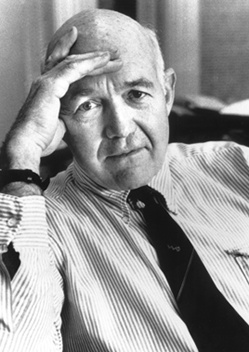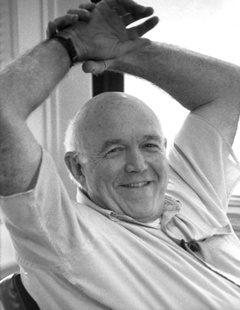 The high-school problem is nothing new. In one of his early writings, excerpted in the following pages, James S. Coleman, the brilliant sociologist who later wrote the famous report on the equality of opportunity for education (the “Coleman Report”) and the first study of public and private schools, identified the essential high-school problem: “our adolescents today are cut off, probably more than ever before, from the adult society.” Thus the title of his classic work, The Adolescent Society, published in 1961, the germ of which first appeared in the Harvard Education Review in 1959 as “Academic Achievementand the Structure of Competition.”
The high-school problem is nothing new. In one of his early writings, excerpted in the following pages, James S. Coleman, the brilliant sociologist who later wrote the famous report on the equality of opportunity for education (the “Coleman Report”) and the first study of public and private schools, identified the essential high-school problem: “our adolescents today are cut off, probably more than ever before, from the adult society.” Thus the title of his classic work, The Adolescent Society, published in 1961, the germ of which first appeared in the Harvard Education Review in 1959 as “Academic Achievementand the Structure of Competition.”
Writing about schools as they existed in thelatter half of the 1950s, Coleman showed the ways in which the organization of school life reinforces teenage anti-learning norms. Except for some quirks of that time and place — the subordinate place of “girls” in American society (which Coleman seems to be tacitly questioning) and the use of the masculine pronounto refer to people more generally, for example — his essay has a timeless quality, as worth reading today as when Coleman put pen to page.
From “Academic Achievement and the Structure of Competition,” James S. Coleman. Harvard Education Review, Volume 29, No. 4 (Fall 1959).
In secondary education … we are beset by a peculiar paradox: in our complex industrial society there is increasingly more to learn, and formal education is ever more important in shaping one’s life chances; at the same time, there is coming to be more and more an independent “society of adolescents,” an adolescent culture which shows little interest in education and focuses the attention of teenagers on cars, dates, sports, popular music, and other matters just as unrelated to school.
Are these conflicting tendencies “natural” ones, irreversible processes resulting from changes in society? Is the nonchalance of the adolescent culture toward scholastic matters, its irresponsibility and hedonism, simply because “teenagers are that way”? Is it something which must be accepted? If so, then the hope of developing students truly interested in learning lies in “rescuing” from the adolescent culture a few students who accept adult values, set their sights on long-range goals, and pay little attention to the frivolous activities of their fellows. This approach is very nearly the one we take now, in our emphasis on special programs for “the gifted child,” our concern with selecting the most intelligent and setting them apart with special tasks which will further separate them from their fellows.
Coleman calls this approach “too simple” and suggests that it would be giving in to the “hedonism and lack of interest in learning of the adolescent culture” to do so. Besides, he says, this approach “probably misses far more potential scientists and scholars than it finds.”
If we refuse to accept as inevitable the irresponsibility and educational unconcern of the adolescent culture, then this poses a serious challenge. For to change the norms, the very foci of attention, of a cultural system is a difficult task—far more complex than that of changing an individual’s attitudes and interests. Yet if the challenge can be met, if the attention of the adolescent culture can be directed toward, rather than away from, those educational goals which adults hold for children, then this provides a far more fundamental and satisfactory solution to the problem of focusing teenagers’ attention on learning.
 Adolescents Don’t Like School
Adolescents Don’t Like School
Coleman then describes his two-year study of the “climate of values” in nine public high schools that gave rise to his conclusions about this “adolescent society.” The schools were all in the Midwest and included those from small towns, suburbs, and cities. Varied in size and in the social classes of their students, they represented, he said, a healthy sample of American schools. Though racial and ethnic breakdowns were missing from his data, what Coleman discovered, and documents with some detail, is that students didn’t care much about scholastic things; that, in all the schools, they cared more for “good looks” and “being an athlete” than they did for “good grades” and “being smart.”
Far less important to the adolescent community are the activities which school is ostensibly designed for: scholastic achievement, leadership of academic clubs, and the like. For example, the question:
“If you could be remembered here at school for one of the three things below, which one would you want it to be: brilliant student, star athlete, or most popular?
Boys responded star athlete over 40 percent of the time, and brilliant student less than 30 percent of the time. This despite the fact that the boy is asked how he would like to be remembered in school, an institution explicitly designed to train students, not athletes.
It is clear from all these data that the interests of teenagers are not focused around studies, and that scholastic achievement is at most of minor importance in giving status or prestige to an adolescent in the eyes of other adolescents. This is perhaps to be expected in some areas, where parents place little emphasis on education. Yet the most striking result from these questions was the fact that the values current in the well-to-do suburban school … were no more oriented to scholastic success than those in the small-town school or the working-class school.… In every school, more boys wanted to be remembered as a star athlete than as a brilliant student. And in six of the nine schools, “good looks” was first, second, or third in importance as a criterion for being in the leading crowd of girls.
Jails, Boot Camp, Factories, and Schools
Even in those instances where scholastic success was valued, Coleman reported, it came with a price: “the success must be gained without special efforts, without doing anything beyond the required work.” In effect, then, even if a school could “immunize” the academically inclined student against the unscholastic larger culture, that student remained isolated from “the crowd.” The answer to this untenable situation, said Coleman, was to change the norms of that culture within the institution, the school, that the adolescents found themselves inhabiting. Coleman offers an analysis of “institutional demands and group response” to set the stage for his suggested solutions. He specifically mentions schools, jails, the military, and factories as institutions in which “an administrative corps” makes demands and a larger group (students, prisoners, soldiers, workers) responds. The “group norms” in the response are particularly important to Coleman.
The same process which occurs among prisoners in a jail and among workers in a factory is found among students in a school. The institution is different, but the demands are there, and the students develop a collective response to these demands. This response takes a similar form to that of workers in industry —holding down effort to a level which can be maintained by all. The students’ name for the rate-buster is the “curve-raiser” … and their methods of enforcing the work-restricting norms are similar to those of workers—ridicule, kidding, exclusion from the group.
Against the Grain —Against the Grade
This doesn’t mean that there aren’t “scholastically oriented subgroups,” says Coleman. The problem is that, as a subgroup, “intense effort” is required to go against the norm.
In a high school, the norms act to hold down the achievements of those who are above average, so that the school’s demands will be at a level easily maintained by the majority. Grades are almost completely relative, in effect ranking students relative to others in their class. Thus extra achievement by one student not only raises his position, but in effect lowers the position of others.
This group response, Coleman says, is “purely rational” and has many of the same characteristics as other endeavors that combine “to prevent excessive competition.” What Coleman suggests, however, is a different way of organizing the competitive instincts and incentives in a school. He points out that there is a difference in the outcomes if the competition is organized through groups rather than between individuals. While what he characterizes as “interpersonal competition in scholastic matters” generates social pressure not to excel, “interscholastic competition in athletics has quite the opposite effect.” In fact, he cites athletics, where “there is no epithet comparable to ‘curve-raiser,’ there is no ostracism for too intense effort or for outstanding achievement,” as a model for the kind of competition he believes needs to be introduced to a school’s scholastic endeavors.
One obvious solution is to substitute interscholastic (and intramural) competition in scholastic matters for the interpersonal competition for grades which presently exists. Such a substitution would require a revision of the notion that each student’s achievement must be continually evaluated or “graded” in every subject. It would instead make such evaluations infrequent, and subsidiary to the group contests and games, both within the school and between schools.
Changing Institutional Norms
Coleman knows that it will take some “considerable inventiveness” to find the best group competitions to change the cultural norms of the high school. But he nevertheless suggests some: “intellectual games, problems, group and individual science projects … debate teams, group discussion tournaments, drama contests, music contests, science fairs … math tournaments, speaking contests.…”
There are many examples in high schools which show something about the effects such competition might have. As an example, one of the schools I have been studying is too small to compete effectively in most sports, but participates with vigor each year in the state music contests. It nearly always wins a high place in the statewide contest. The striking result of this successful competition is the high status of music among the adolescents themselves. It is a thing of pride to be a trombone soloist in this school, and the leading boys in the school are also leading musicians—not, as in many schools, scornful of such an unmanly activity. This is despite the fact that the school serves a largely farming community.
Finally, Coleman believes that these shifts in the competitive structure of high schools can change the norms and values of the institution, for the better, to encourage academics. “If the activity, whether it be debate or math competition or basketball, receives no publicity, no recognition in the newspapers and by the community generally, then its winning will have brought little glory to the school, and will bring little encouragement to the participants.” So, says Coleman, change the competitive structure of the high school and we can change them from places of athletic to academic prowess.
The present structure of rewards in high schools produces a response on the part of an adolescent social system which effectively impedes the process of education. Yet the structure of rewards could be so designed that the adolescent norms themselves would reinforce educational goals.
James S. Coleman, 1926–95, American sociologist, was born in Bedford, Indiana, and taught at Stanford, the University of Chicago, and Johns Hopkins University.


